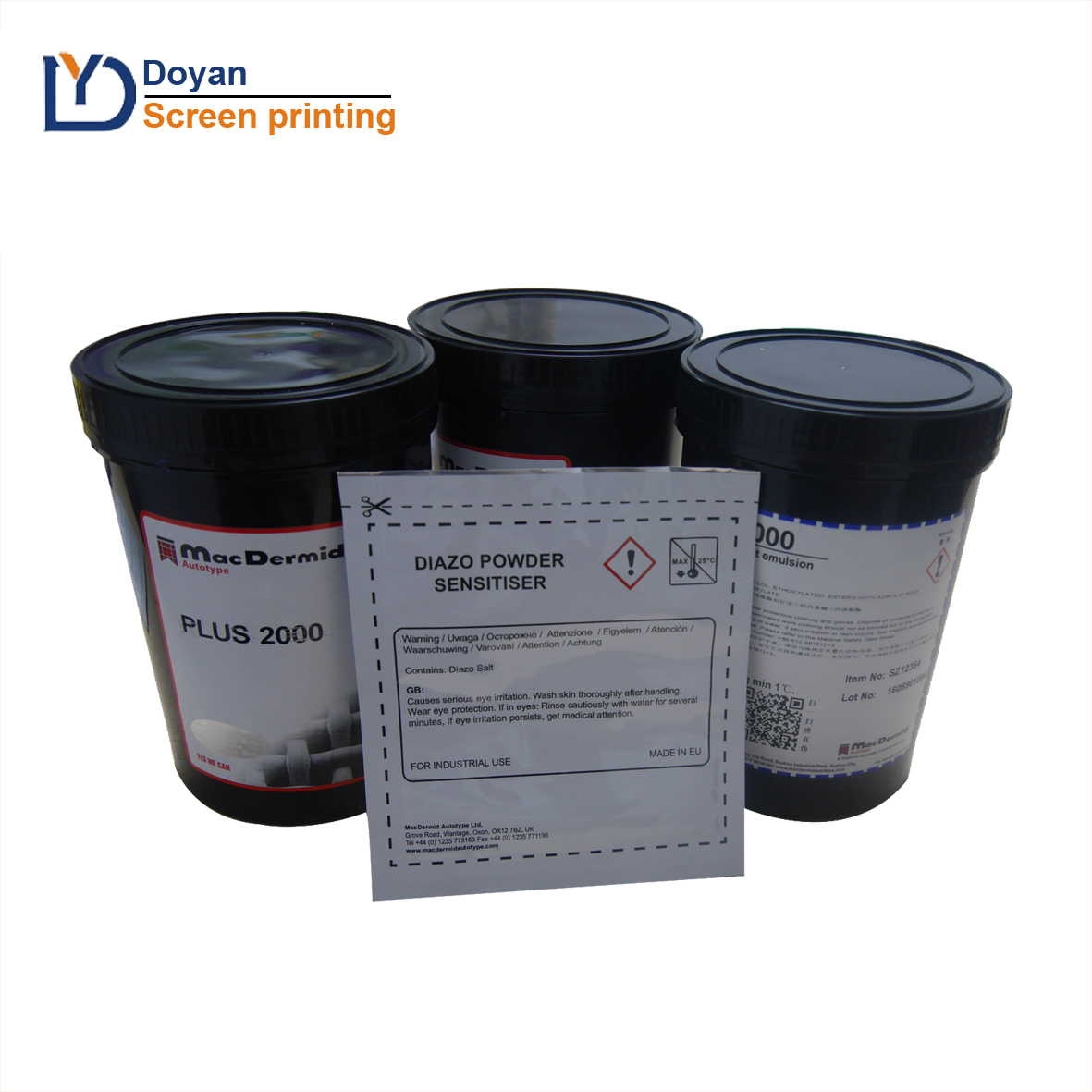

Water-based Diazo Emulsion (water and water-soluble solvents as the main components to dissolve the color base); Water-based Diazo Emulsion is a homogeneous paste composed of linkers, pigments, additives and other substances. The linker provides the necessary transfer properties of Diazo Emulsion and the pigments give Diazo Emulsion its color. There are two main types of linkers for aqueous Diazo Emulsion: water dilutable and water dispersible. The water dilutable type uses a variety of resin types, such as maleic acid resins, violet gum, maleic acid resin modified shellac, uratan, water soluble acrylic resins and water based amino resins. Water-dispersible linkers are obtained by polymerization of emulsified monomers in water.
Water-based Diazo Emulsion and Oil-based Diazo Emulsion
B. Oil-based Diazo Emulsion (non-water soluble solvents are used as the main component to dissolve the color base) Water-based Diazo Emulsion contains dye and pigment inks (the ph value of these Diazo Emulsions is generally neutral); oil-based inks also contain dye and pigment inks (the ph value of these Diazo Emulsions is generally acidic). Emulsion ph value is generally acidic) water-based Diazo Emulsion and oil-based Diazo Emulsion can not be mixed (water-based Diazo Emulsion can not use oil-based hardener, the same reason).
Distinction in terms of environmental friendliness.
The main difference between water-based Diazo Emulsion and oil-based Diazo Emulsion is the difference in solvents. Water-based Diazo Emulsion uses water (45%~50%) as the solvent, with very low VOC (Volatile Organic Compounds) content and minimal pollution to the environment; oil-based Diazo Emulsion uses organic solvents (toluene, xylene, industrial alcohol, etc.) as solvents. Toluene and xylene are important items for product environmental monitoring. Oily Diazo Emulsion is less environmentally friendly than water-based Diazo Emulsion in the production, use and waste disposal processes.
Differentiation in terms of application and usability.

Water-based Diazo Emulsion is particularly suitable for packaging and printing products with strict environmental requirements, such as tobacco, wine, food, beverages, pharmaceuticals, and children's toys. Oil-based Diazo Emulsion is suitable for 100% cotton, cotton/polyester blends, polyester, dark and light colored fabrics, denim and other fabrics. Now, with the upgrade of "oil to water" environmental protection, water-based Diazo Emulsion is gradually used on fabrics and garment leathers (Sanchi International Chemical has various water-based Diazo Emulsions for various garment fabrics, TPU, PU, leather, handicrafts, etc.). Oil-based Diazo Emulsion has better adhesion on some printing substrates compared to water-based Diazo Emulsion, which needs to be tested on different products.
In terms of cost, water-based Diazo Emulsion is more expensive than oil-based Diazo Emulsion, but water-based Diazo Emulsion has less odor, water-based Diazo Emulsion is less environmentally friendly, and Diazo Emulsion products account for only a small portion of the cost of the printed product. The cost of Diazo Emulsion is a small percentage of the cost of the printed product, so it is up to the user to make their own calculations.
 +8618931890464
+8618931890464